Related Research Articles

The Ilyushin Il-30 was a Soviet turbojet-powered tactical bomber designed as a higher-performance, swept wing version of the Ilyushin Il-28, in the late 1940s. Its thin wing and engine nacelles necessitated the use of tandem landing gear, the first Soviet aircraft to do so. It was apparently canceled before the prototype made its first flight, although sources disagree with this.
The Tupolev Tu-82 was a 1940s Soviet experimental swept-wing bomber. It was the first Soviet jet bomber with swept wings.
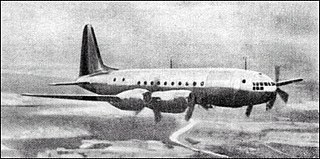
The Ilyushin Il-18 was a Soviet four-engined airliner designed and built by Ilyushin immediately after World War II. Although the aircraft itself was successful, its Shvetsov ASh-73TK engines were too unreliable for civilian use and were further needed to equip the Tupolev Tu-4 bomber, so it was cancelled in 1948.
The Beriev MBR-7 was a Soviet short-range reconnaissance/bomber flying boat developed by the Beriev design bureau at Taganrog. Designed as a successor to the MBR-2 but it did not go into production due to lack of engines.
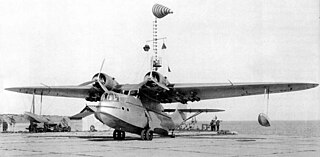
The Beriev MDR-5 (sometimes Beriev MS-5) was a Soviet long-range reconnaissance/bomber flying boat prototype developed by the Beriev design bureau at Taganrog. It did not enter production as the rival Chyetverikov MDR-6 was preferred.

The Bratukhin B-11 was a prototype Soviet twin-rotor transport helicopter and the last design of the Bratukhin aircraft design bureau to be built.
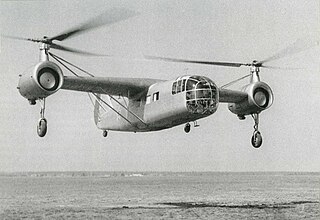
The Bratukhin B-5 was a prototype Soviet twin-rotor transport helicopter designed by the Bratukhin aircraft design bureau.
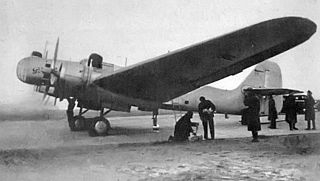
The Tupolev ANT-37 was a Soviet twin-engined long-range bomber designed and built by the Tupolev design bureau, the design team operating under the guidance of Pavel Sukhoi. The aircraft did not enter production, but three examples of the type were used for research and record breaking flights.
The Yatsenko I-28 was a 1930s Soviet single-seat fighter designed by Vladmir Yatsenko and first flown in 1939. The I-28 was a low-wing cantilever monoplane of mixed construction powered by a 900 hp (671 kW) Tumansky M-87 radial piston engine. It had an enclosed single-seat cockpit with a rearwards sliding canopy. The wing had an inverted-gull shape to reduce the length of the retractable main landing legs. The prototype was destroyed shortly after the first flight but an order was placed for 30 production aircraft. Also ordered was a prototype of an attack version, the I-28Sh. Although the first five production aircraft were completed the programme was cancelled in early 1940.

The Yakovlev AIR-1 (VVA-3) was a 1920s Soviet two-seat light biplane, the first aircraft designed and built by Aleksandr Sergeyevich Yakovlev.
The Polikarpov P-2 was a 1920s Soviet two-seat intermediate training biplane. It was a single-bay biplane powered by a 300 hp (224 kW) M-6 water-cooled V-8 engine with a retractable radiator. The prototype first flew in 1927 and entered production with an order for 55 for use as an intermediate trainer. Problems with the original strut-based wing bracing resulted in many aircraft being modified to use bracing wires. It was one of the first aircraft types to be used to train navigators and machine gunners but the type was not very stable and had problems with flying qualities causing the type to be little used.
The Yakovlev Yak-10 was a Soviet light liaison aircraft designed and built by the Yakovlev design bureau in the 1940s.

The Shavrov Sh-7 was a Soviet civil transport amphibious aircraft designed by Vadim Shavrov. Although it was ordered into production for Aeroflot, the start of the Great Patriotic War resulted in only a single prototype being built.

The Yakovlev AIR-3 was a 1920s Soviet two-seat general aviation monoplane designed and built by Aleksandr Sergeyevich Yakovlev.
The Tupolev ANT-29 was a 1930s twin-engined, cannon-armed fighter designed by Alexander Arkhangelsky and built by Tupolev.
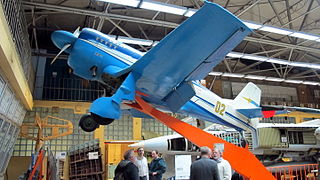
The MAI Kvant was a Soviet aerobatic trainer designed by students at the Moscow Aviation Institute. In October 1967 the aircraft was displayed at the Economic Achievement Exhibition in Moscow. The Kvant was a single-seat low-wing monoplane with a retractable main landing gear and a fixed tailwheel. It was powered by a 360 hp (268 kW) Vedeneyev M14P radial engine. The aircraft held five official FAI world records.
The Chyeranovskii BICh-18 Muskulyot is an experimental Soviet man-powered ornithopter designed and built by Boris Ivanovich Cheranovsky. The BiCH-18 was a lightweight wooden construction biplane with two pairs of high aspect ratio wings moved by muscle power. It was first flown in 1937 by R.A. Pischuchev as a glider with the wings locked and launched by cable. On the fourth test the wings were operated by the pedals and a glide of 430 m (470 yd) was achieved.

The Yakovlev AIR-5 was a prototype Soviet single-engined cabin monoplane designed by the Yakovlev design bureau. The AIR-5 was a high-wing strut-braced monoplane with a 200 hp (149 kW) Wright J-4 Whirlwind engine. It had a tubular steel fuselage, wooden wings and an enclosed cabin for a pilot and three passengers.
The Polikarpov Ivanov was a 1930s prototype Soviet ground attack monoplane designed by Polikarpov for a soviet government procurement competition codenamed Ivanov.
The Shavrov Sh-5 was a Soviet civil amphibian flying-boat designed by Vadim Borisovich Shavrov as a photographic platform for aerial mapping. By the time it flew it was an outdated design and the type did not enter production.
References
- 1 2 The Illustrated Encyclopedia of Aircraft (Part Work 1982-1985). Orbis Publishing. p.1138
- ↑ Книга «Полет птиц и машины с машущими крыльями».
- ↑ Nemecek, Vaclav (1986). The History of Soviet Aircraft from 1918. London: Willow Books. ISBN 0-00-218033-2 p. 366
- ↑ Gordon, Yefim; Gordon, E.; Gunston, Bill (2000). Soviet X-planes. Midland Pub. ISBN 978-1-85780-099-9.
- ↑ "Черановский БИЧ-16". www.airwar.ru. Retrieved 2023-05-07.
Bibliography
- The Illustrated Encyclopedia of Aircraft (Part Work 1982-1985). Orbis Publishing.
- Nemecek, Vaclav (1986). The History of Soviet Aircraft from 1918. London: Willow Books. ISBN 0-00-218033-2.